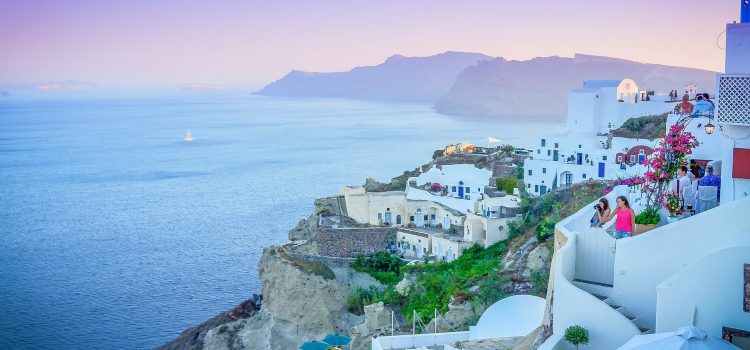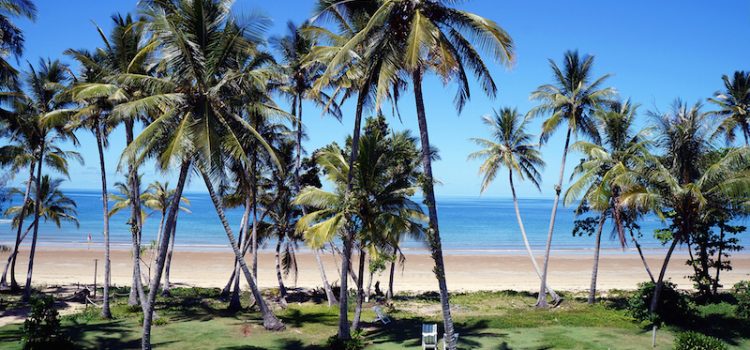7 Ways To Travel More Sustainably — An Optimistic Take
Despite some slow progress, travelling in more sustainable ways is getting easier. As travellers we have more ways to reduce our environmental impact, while more tourism companies are making the necessary changes to decrease their carbon footprint.
I know this might just make me sound hopelessly hopeful. There’s been a lot of doom and gloom in the news around climate change in particular, and in my opinion, deservedly so. In fact, if you’d asked me a few years ago, I’d probably have said humanity is about 90% screwed. But some stuff is actually making positive progress, so now I think we are, oh, maybe 75% screwed?
So, that’s good news! You can count me as a “glass-quarter-full (maybe?)” kind of guy.
I’m joking (a bit), but given there is so much negativity to consider already, I think it’s worth taking a more optimistic look at how we can travel in more sustainable ways. Now is a great time to consider this issue, especially as we begin to look beyond the hump of the COVID-19 pandemic and horizons are opening up again.
While I believe governments and companies bear the most responsibility for our current mess, I also think consumer choice and support can make a helpful difference. In that spirit, here are some ways we can reduce our impact as travellers.
1. Choosing better flights
Aviation contributes hugely to carbon emissions, and for all sorts of reasons, it is a challenge to make it environmentally friendly right now.
This clearly makes flying one of the biggest sustainability issues within the tourism industry.
I don’t know about you, but I always feel a little bit guilty when taking a long-distance flight, just knowing it causes a great deal of pollution in a relative sense. I often hear of other travellers feeling the same.
Not every flight emits the same levels of carbon, however. This means that we, as travellers, can choose a less polluting flight and make a difference.
It’s become a lot easier to make informed decisions regarding the environmental impact of flights. For instance, try searching with Google Flights, and you will see an estimate of the CO2 emissions for every flight option.
2. Travelling overland
So much attention is placed on how bad flying is for the climate that we don’t talk enough about just how good overland travel is.
Rail, in particular, is just a mind-blowingly low-carbon option. In fact, high-speed rail is the most efficient form of transport that humanity has come up with… by far.
For starters, it uses very little energy per passenger. According to the book Energy by Vaclav Smil (I’ve been reading very nerdy books), a French TGV can move people around using less than 0.4 MJ/p-km (the energy used per passenger per kilometre). This figure is about 2 MJ/p-km for jet airlines.
That’s a whopping five times better, but that’s just the base efficiency. The difference becomes much greater when putting it in terms of carbon emissions.
3. Staying in eco-accommodation
Another way of reducing our impact on the environment is choosing accommodation that cares about water and energy use, waste disposal, food sourcing, and other such aspects.
It’s wonderful that increasing numbers of hotels, hostels and eco-lodges are prioritising sustainability.
But how do you find them?
Honestly, sometimes just looking for places with an eco or hippie vibe does the trick. Looking at the pictures or descriptions can usually give you a lot of information. Maybe the place uses solar panels, serves breakfast with veggies from the garden or just gives the overall impression that it might be eco-conscious. Many booking sites can also help you specifically find places advertised as eco-lodges or eco-resorts.
4. Supporting ecotourism
Ecotourism is another way to make an impact. While directing some of your tourist money to ecotourism won’t necessarily negate the overall environmental impact of your trip, ecotourism does play a crucial role in protecting nature and preserving biodiversity.
The more ecotourism experiences I’ve had around the world, the more passionate I feel about them!
Ecotourism is basically any kind of tourism that benefits the environment and the local people. Safaris are often one of the first things that spring to mind, but there are many other examples. I consider scuba diving, whale-watching, hiking, rock climbing, and canyoning all to be ecotourism as well (if they’re done responsibly).
5. Choosing electric
While the low impact of rail transport is impressive, electric cars are another contender joining the fray. It’s incredible just how quickly electric cars have gone from barely-a-thing to the inevitable future.
It’s 2022 and there aren’t that many EVs on the road yet, but it’s safe to say that gas and diesel cars are now officially among the ancient dinosaurs of technology — it’s just a matter of time until they are replaced. And this is great news for those who wish to travel more sustainably.
It won’t be long before you can easily rent an electric car on your next holiday. Kicking off the trend, last year Hertz announced the purchase of 100,000 Tesla cars which will become available for rental over the next few years.
But wait, is that truly a good thing?
Some still doubt and dispute that electric cars are better for the environment. I’ve had the chance to learn about this topic a lot (for reasons other than this blog), and the answer is yes, they are definitely better!
There are some companies (like the ones still making those dinosaur cars) trying to sow seeds of doubt and confusion, but EVs are absolutely better. It is not disputed that they do take somewhat more CO2 emissions to produce, but this is very quickly compensated for by their incredible efficiency.
Even if you power an EV using electricity from a dirty coal plant rather than renewable energy, it’s still an improvement. In a typical petrol car, only about 25% of the fuel energy is actually used to move the car, while the rest is lost as heat. That’s kinda nuts! EVs don’t have this problem.
EV’s also need less maintenance, last much longer, and their batteries are almost completely recyclable at their end of life. Sounds good to me.
Electric cars are mainly found in developed countries, so it’s not of much use at this stage if you’re travelling in Sri Lanka or Bolivia. But I definitely look forward to renting an EV and seeing more on the road around the world.
Every time you see one, it’s a sign that some things really are improving.
6. Reducing waste
This point is so common sense that it surely calls for very few words: travelling wastefully or excessively is obviously less sustainable.
For instance, taking long showers during your stay will affect resource demand, especially in a destination where water is scarce. Using a refillable water bottle is also clearly preferable to using single-use plastic bottles all the time. These containers can quickly add up, particularly in tropical countries where you might go through several bottles a day.
These are just two examples; I’m sure you can think of a few more.
I think the idea of being less wasteful can also be extended to the overall trip. Taking flights for three separate weekend trips is wasteful compared to flying somewhere and staying a week. Longer and slower travel can thus reduce the overall waste level if you average out your impact across all travel days.
By combining your trips or using the option to work remotely, you may be able to stay at the destination longer while gaining the chance to experience more.
7. Compensating your emissions
Finally, it is possible to offset the CO2 emissions of your trip. Such offsets will pay for, say, having trees planted or solar panels installed. You’ve surely heard of such offsetting initiatives, though they are not without some controversy.
I was in favour of offsets when it felt like there was not much else you could do, but a lot has changed in the past few years. I now worry that offsets purchased by the consumers let companies off the hook, reducing their motivation to change to more environmentally sustainable options. There are also questions about how effective some of these offsets really are.
Personally, I now feel it may be better to choose companies that have pledged to offset CO2 emissions for every customer across the board (during their transition to more sustainable methods) rather than to leave it up to the individual to do it.
Even if offsets have an uncertain impact, there are more direct ways to compensate for emissions in your own life. It’s already quite easy to choose to eat less meat, choose electricity for your home from renewable sources, or support charities actively working on nature conservation. If you invest, you can choose sustainable funds instead of (sorry…) energy-wasting bitcoin.
When it comes to election time, you can choose to vote for political parties that support strong environmental policies—possibly the best ‘offset’ you can make.
Mission Beach: What to See, Where to Stay & How to Get There
Flight Centre travel consultant and The 48 Hour Destination TV host Greer Gardiner gives the rundown on what to see and do in Mission Beach after filming in the region for the show’s Tropical North Queensland episode, read on for her tips on what to see and do…
Mission Beach is a quaint beach town that lies between Townsville and Cairns just 30-kilometres from the Bruce Highway, flanked by not one but two World Heritage areas. From the marine paradise of the Great Barrier Reef to the Wet Tropics Rainforest, Mission Beach has it all.
Whether you’re after an escape to nature, somewhere to keep the kids entertained or a relaxing spa getaway, there’s so much to see and do. There are over 20 nearby islands, beach landing skydiving, white water rafting and of course underwater diving and snorkelling on the Great Barrier Reef. In fact, Mission Beach is the closest land waypoint to the GBR, meaning you will have more time snorkelling and less time transferring there and back.
Also referred to as the Cassowary Coast, Mission Beach is home to the largest population of Cassowaries anywhere in Australia, so keep your eyes peeled when you’re in town.
Where to stay
Located in Mission Beach is the fabulous Castaways Resort & Spa, a stunning coastal accommodation where you can walk straight from your hotel room to the sandy beach in a matter of seconds. From there you can simply take your pick of where to head along the 14-kilometres of pristine Mission Beach beachfront.
While filming The 48 Hour Destination: TNQ, we stayed at Castaways Resort & Spa. I would wake up to the sound of the ocean, peel back the curtains and be greeted by the soft and friendly wave of the palm trees in front. Now that’s what you call paradise.
The resort boasts amenities such as a 25-metre lap pool and gym so you can keep up with your fitness regime while you’re away, a beachfront leisure pool, rainforest lagoon pool, laundry, Bibesia Restaurant and Cocktail Bar and most importantly the Drift Day Spa.
The view from Castaways Resort & Spa Mission Beach.
What to do
With plenty of fun to be had for everyone from the backpackers making their leisurely way along the coast to families looking for some school holiday fun close to home. If it’s extreme adventure you’re looking for then you can’t go past skydiving with a gorgeous beach landing.
For something a little less extreme that all of the family can enjoy, white water rafting with Raging Thunder Adventures down the Tully River is a whole lot of fun. There are also plenty of rainforest hikes to explore each day, and of course, don’t forget to keep an eye out for Cassowaries! Something the kids are sure to enjoy is a crocodile and wildlife tour along the Hull River – see what’s lurking in the mangroves.
If it’s the reef you’re after then you’ve come to the right place and you can’t go past Mission Beach Dive. It doesn’t get much better than spending a full day out on the water especially when everything is catered for from the flippers to the food. Whether it’s snorkelling or diving, the whole family is sure to enjoy seeing the most incredible Great Barrier Reef away from the crowds with the fun and friendly crew at Mission Beach Dive.
White water rafting with Raging Thunder Adventures.
When to go & How to get there
Mission Beach is a two-hour drive along the coast south from Cairns and a three-hour drive from Townsville. You can fly to both Cairns and Townsville from Brisbane, and to Cairns from other capital cities across Australia.
Mission Beach is not somewhere that I had originally marked on my travel bucket list, however now that I’ve been I most certainly will be back. To be honest the lack of crowds and the serenity and peacefulness that comes with it is what makes this quaint beach town a hidden oasis. So let’s keep it our little secret shall we?
Views of the region from Lugger Bay Hill, picnic provided by Castaways Resort & Spa for The 48 Hour Destination: TNQ.


